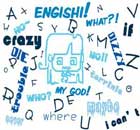Foreign and Military Affairs
Full text: US Human Rights Record in 2009
(Xinhua)
Updated: 2010-03-12 16:52
 |
Large Medium Small |
IV. On Racial Discrimination
Racial discrimination is still a chronic problem of the United States.
Black people and other minorities are the most impoverished groups in the United States. According to a report issued by the US Bureau of Census, the real median income for American households in 2008 was 50,303 US dollars. That of the non-Hispanic white households was 55,530 US dollars, Hispanic households 37,913 US dollars, black households only 34,218 US dollars. The median incomes of Hispanic and black households were roughly 68 percent and 61.6 percent of that of the non-Hispanic white households. Median income of minority groups was about 60 to 80 percent of that of majority groups under the same conditions of education and skill background (The Wall Street Journal, September 11, 2009; USA Today, September 11, 2009). According to the US Bureau of Census, the poverty proportion of the non-Hispanic white was 8.6 percent in 2008, those of African-Americans and Hispanic were 24.7 percent and 23.2 percent respectively, almost three times of that of the white (The New York Times, September 29, 2009). About one quarter of American Indians lived below the poverty line. In 2008, 30.7 percent of Hispanic, 19.1 percent of African-Americans and 14.5 percent of non-Hispanic white lived without health insurance (Income, Poverty, and Health Insurance Coverage in the United States: 2008, www.census.gov). According to a report issued by the US Department of Housing and Urban Development, a record 10,552 fair housing discrimination complaints were filed in fiscal 2008, 35 percent of which were alleged race discrimination (The Washington Post, June 10, 2009). The US Centers for Disease Control and Prevention reported that while African-Americans make up 12 percent of the US population, they represent nearly half of new HIV infections and AIDS deaths every year (The Wall Street Journal, April 8, 2009; revised statistics released by the Centers for Disease Control and Prevention).
Employment and occupational discrimination against minority groups is very serious. Minority groups bear the brunt of the US unemployment. According to news reports, the US unemployment rate in October 2009 was 10.2 percent. The jobless rate of the US African-Americans jumped to 15.7 percent, that of the Hispanic rose to 13.1 percent and that of the white was 9.5 percent (USA Today, November 6, 2009). Unemployment rate of the black aged between 16 and 24 saw a record high of 34.5 percent, more than three times the average rate. Unemployment rates for the black in cities such as Detroit and Milwaukee had reached 20 percent (The Washington Post, December 10, 2009). In some American Indians communities, unemployment rate was as high as 80 percent (The China Press, November 6, 2009). According to the US Bureau of Labor Statistics, the unemployment rate for black male college graduates aged 25 and older in 2009 has been twice that of white male college graduates, 8.4 percent compared with 4.4 percent (The New York Times, December 1, 2009). In 2008, a record number of workers filed federal job discrimination complaints, with allegations of race discrimination making up the greatest portion at more than one-third of the 95,000 total claims (AP, April 27, 2009). According to an investigation by the US Equal Employment Opportunity Commission, a Houston-based oil and gas drilling company faced five complaints of racial harassment and discrimination (AP, November 18, 2009). According to a news report, by the end of May 2009, the black and Hispanic groups each accounted for roughly 27 percent of New York City's population, but only 3 percent of the 11,529 firefighters were black, and about 6 percent were Hispanic since the city's fire department unfairly excluded hundreds of qualified people of color from the opportunity to serve (The New York Times, July 23, 2009).
The US minority groups face discriminations in education. According to a report issued by the US Bureau of Census, 33 percent of the non-Hispanic white has college degrees, proportion of the black was only 20 percent and Hispanic was 13 percent (US Bureau of Census, April 27, 2009, www.census.gov). According to a report, from 2003 to 2008, 61 percent of black applicants and 46 percent of Mexican-American applicants were denied acceptance at all of the law schools to which they applied, compared with 34 percent of white applicants (The New York Times, January 7, 2010). African-American children accounted for only 17 percent of the US public school students, but accounted for 32 percent of the total number which were expelled from the schools. According to a research by the University of North Carolina and Michigan State University, most of the black juvenile believed that they were victims of racial discrimination (Science Daily, April 29, 2009). According to another study conducted among 5,000 children in Birmingham, Ala., Houston and Los Angeles, prejudice was reported by 20 percent of blacks and 15 percent of Hispanics. The study showed that racial discrimination was an important cause to mental health problems for children of varied races. Hispanic children who reported racism were more than three times as likely as other children to have symptoms of depression, blacks were more than twice as likely (USA Today, May 5, 2009).







